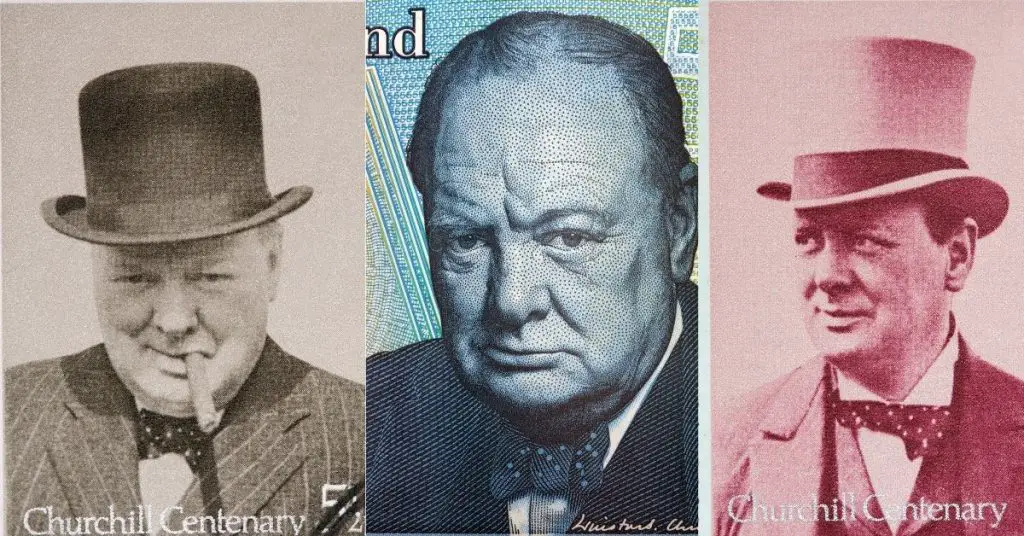Disclaimer: We sometimes use affiliate links in our content. For more information, visit our Disclaimer Page.
In any organization, there is always a need for leadership. This is especially true in large, complex organizations like the government. Bureaucratic leadership is a type of leadership that requires a strong understanding of the organization and an ability to adapt to keep it running smoothly. Let’s look at what bureaucratic leadership is and how it works.
Bureaucracy refers to a system of organization where tasks are divided into specific roles and duties, and particular people fill these roles. The goal of a bureaucracy is to ensure that each task is carried out efficiently and effectively.
What is a Bureaucratic leadership style?
According to Max Weber, bureaucratic leadership fell into the category of legal-rational authority, in which subordinates follow the leader’s absolute command and rigid rules. Under bureaucratic leadership, job security can be high, as employees are anticipated to perform undoubtedly.
The manager’s role is to establish these rules and guidelines, making sure they are followed at all times. In a Bureaucratic leadership style, communication between employees and their managers is formal, very structured, and predictable.
This style is also quite simple to implement and utilize, unlike other leadership styles like charismatic leadership.
Related: 16 Leadership Styles
Who coined bureaucratic leadership?
Max Weber is the man credited with originating the theory of bureaucratic leadership. He also developed the concept of transactional leadership, which is an alternative to his strict approach to management.
He was a German sociologist and political economist who had a significant impact on sociology in general and bureaucracy in particular. The industrialization of Europe heavily influenced his ideas.
How does this leadership style work?
Managers in the Bureaucratic leadership style are seen as dictating the rules that employees must follow. They are responsible for making sure that these rules are adhered to, and they will judge their employees based on the degree to which they follow them.
The set of rules in this bureaucratic system is very formalized and usually starts with an organization chart, including all subordinates. This organization chart outlines each subordinate’s goals, how many people work under them, etc.
After defining the roles of managers and subalterns, there are guidelines for both groups of people to follow when working together. These guidelines explain clear steps that should be taken by each person involved for specific objectives to be met.
For example: if a manager wants their subordinates to work independently, they should give them a specific set of instructions.
Managers in bureaucratic style expect their employees to have the skills needed to be independent and self-reliant. In an environment where technical knowledge is valued, they want employees who can easily handle most tasks.
However, in some cases, managers may also tend towards becoming too controlling when trying to achieve particular objectives. This leads them to micromanage the people under their authority, making employees feel they are being kept on a short leash.

7 characteristics of Bureaucratic Leadership Style:
- Organized and systematic: Bureaucratic leadership is composed of well-planned strategies to help organizations get their work done. They use organizational structures to get the job done efficiently.
- System thinking: The leaders will consider long-term benefits rather than just focusing on immediate gains or losses to the business. Their decisions are not based on their gain, but instead, they factor in other people and things that might be affected by their choices, like the environment and stakeholders.
- Protects and builds organizational reputation: When a leader does good for an organization, it results in favorable public opinion about the company or brand, while bad reputations can also damage or destroy a brand’s image.
- Task-oriented: Bureaucratic leadership is primarily concerned with tasks that need to be handled like plans, projects, and processes.
- Promotes communication within the organization: Cables used for communication are formal (e-mails) and informal (in-person conversation).
- Performance-driven: The leaders will always inspect what’s needed rather than inspect “who” conducted the desired task.
- Strong time management skills: Bureaucratic leaders prioritize work according to its urgency and importance. They use their time effectively without wasting it on unnecessary things.
Advantages of Bureaucratic Leadership Style
People like to believe that they control their lives and future. This is especially true for students who are still trying to grasp their career direction. Understanding the benefits of bureaucratic leadership may make it easier for them to determine if this type of structure is best suited to what they envision for themselves.
Below are some practical benefits associated with an individual working within a bureaucratic leadership style:
Clear Rules and Regulations
Bureaucratic leadership requires laid out rules and regulations that should be followed by all individuals involved in the bureaucracy hierarchy. When specific expectations exist, it can help people map out what needs to succeed.
It encourages individuals within the bureaucracy to work together as a cohesive unit. In addition, rules and regulations can provide a sense of order within the organization, which helps to promote a more positive working environment.
Leadership Hierarchy
In most cases, those individuals at the top of the bureaucratic leadership hierarchy have been there for many years. They have proven that they can work well under these strict guidelines and conditions. In turn, it is said that they tend to be more efficient leaders as they have already gone through this official training process before assuming their new role.
Manage Change Effectively
When organizations experience change regularly, it may be hard for some to cope with the adjustments needed to succeed. However, those who work within a bureaucratic structure have been trained to manage change effectively. They know that it is part of the process and rely on their training and the rules and regulations previously laid out to adjust accordingly.
Follow Organizational Policies
When individual works within a bureaucracy, they are encouraged to follow all established organizational policies. It can be helpful for those who feel overwhelmed with too many choices or decisions to make daily—knowing what acceptable courses of action can simplify these issues, allowing individuals to focus on what needs to be accomplished throughout the day.
Delegate Responsibilities
Bureaucratic leadership encourages individuals under them in a hierarchy to pass down specific responsibilities that they may no longer be necessary to handle. This can help those who are now supervising others focus on high-priority tasks that need immediate attention and other projects that will benefit the organization.
Measure Policies by Objectives
A Bureaucratic leader encourages organizations and individuals within this type of structure to strictly adhere to specific guidelines and processes for it all to fall into place successfully. For example, suppose each individual can measure their work performance by following these objectives. In that case, they can ensure that everything is moving forward at a proper pace, leading towards success in the long run.
Ensure Employees are Productive
One positive aspect of working within a bureaucratic style is that employees feel like they need to be productive. This ensures that their jobs are essential, and they are not just there to collect a paycheck but rather to contribute to the organization’s overall success.
Also known as an official leadership structure or management style, the bureaucratic system is ideal for many companies who want to remain consistent with logistics and tasks over time. Bureaucratic leaders attempt to control change within their organizations by laying out rules and regulations that everyone involved should follow to move towards common goals successfully.
When employees can follow these structured guidelines, it is easier for them to stay focused on what needs to be done throughout the day. Working within this environment may not always be easy; however, it can help individuals reach new heights in their personal and professional lives.

Disadvantages of Bureaucratic Leadership
There are many disadvantages to bureaucratic leadership as well. A better knowledge of these cons will help managers, politicians, and those in a leadership position to have a certain level of understanding about the results to anticipate. Some possible drawbacks include:
Decreased adaptability
When processes have been documented and procedures have been put in place, it becomes challenging to make changes. Employees may need permission from multiple people before they can make simple adjustments. This can slow down overall operations and prevent new ideas from being implemented quickly, which is necessary for most businesses.
Micromanagement
When processes are documented and procedures are put in place, it is straightforward for management to micromanage. Employees may feel that they are being watched or judged at all times because documentation allows them to be held accountable for their actions. This can lead to decreased morale and difficulty retaining highly skilled employees.
Slow decision making
Every action must be documented along with its justification. This can make it difficult to respond quickly if issues arise or new opportunities present themselves. It also gives the appearance of not being proactive, which will turn off customers and potential clients who want a partner who can think on their feet.
These disadvantages should not necessarily dissuade any business from using bureaucratic leadership; after all, what works for one company may not work for another. However, companies need to carefully evaluate their own internal needs, along with several other factors, to determine whether or not this type of leadership is the right fit.
Examples of Bureaucratic leadership

Here are some of the best examples of Bureaucratic leaders.
1. Winston Churchill
Winston Churchill was the British Prime Minister during the Second World War. His leadership style is often described as a hybrid of his predecessors, Neville Chamberlain and David Lloyd George. Like Chamberlain, Churchill was a firm believer in appeasing Hitler and Nazi Germany.
However, like Lloyd George, he was also known for his willingness to take risks and was not afraid of conflict when it served a greater purpose. Churchill’s leadership is also often praised for its near-perfect timing. At the beginning of his career, he came into power at a weak point in Great Britain’s history (after World War 1). However, he was able to turn the country around and rally them to victory by the end of World War 2.
2. Deng Xiaoping
Deng Xiaoping was the General Secretary of China from 1978 to 1992. During this time, he helped turn China into a market-oriented economy and implement the “one country, two systems” idea. Deng’s leadership style was marked by a strong focus on institutional development and economic reform.
3. Harold Sydney Geneen – ITT
Harold Sydney Geneen was a former president of International Telephone and Telegraph (ITT) Corporation. He joined the firm in 1949, became CEO in 1959, and chairman in 1963.
He held his position as CEO until 1977 and chairman until 1980. This was an exciting time because ITT was a multinational company involved in various unpopular activities.
For example, at one point, Geneen had to choose whether or not ITT would help the CIA overthrow left-wing Chilean President Salvador Allende. Yet, despite all of these conflicts, Geneen was able to run ITT very effectively using bureaucratic leadership. This is mainly because he was well-versed in corporate policy and how things are done here.
Related: Theory of Leadership
Final Thoughts
Effective bureaucratic leadership can ensure an organization has a clear and unified goal, that procedures are followed correctly, and that resources are used efficiently. In addition, bureaucracies often have a high degree of stability because their leaders tend to be very careful in making changes. Finally, bureaucracies often have a great deal of expertise in their area of operation.
One downside of bureaucratic leadership is that it can lead to stagnation and lack of innovation. Bureaucratic leaders may also be more interested in following rules than achieving the organization’s goals. This can lead to inefficient use of resources and conflict with other parts of the organization. It is a rigid structure that is not well fitted for quick adaption and organizational transformation.
Related: 5 Levels of Leadership





